Book: Health and Fitness
Author: Nayma Nishat - Researcher, Health & Fitness

The most common mental health disorders are a broad set of problems, with different symptoms. But they are usually characterized by a combination of abnormal thoughts, emotions, behaviors, relationships with others, or social interactions.
Depression, addictions, and disorders related to drug or alcohol use, anxiety and phobias, eating disorders, schizophrenic, bipolar, or borderline disorders are examples of the most common mental health disorders.
Mental health, an essential component of health, is a state of well-being, and the ability of the mind to function normally and respond appropriately to the stimuli of the environment.
We then speak of mental disorders when this state of well-being is distressed by psychiatric affections. The individual is then unable to maintain his psychic balance and adapt to difficult or painful situations.
According to the World Health Organization (WHO), “around 1 in every 4 people in the world suffer a mental disorder throughout their lives.”
But people can improve with proper care. The more you learn about mental health disorders list the more you will understand the illnesses, which will be helpful for treatments. So let’s know about it.
We know a wide variety of mental illnesses of very different types. Although each disorder has its own characteristics that distinguish them from each other, in many cases they have points in common, such as the etiology or symptoms, which means that they can be grouped into specific categories, and can be classified into different types.
This type of nosological classifications is used by various professionals in the health field in order to know and work on the different types of disorders. Therefore, in this article, we are going to talk about the main types of mental illness.
There are different types of mood disorders or affective disorders and, as the name suggests, their main underlying characteristic would be an alteration of the mood of the individual. The most common mood disorder is:
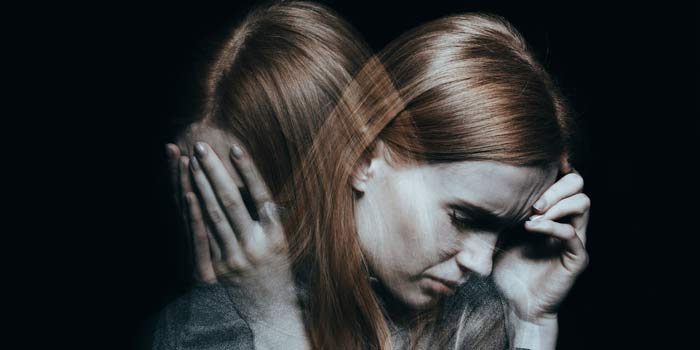
Bipolar disorders usually have two phases: the manic phase and the depressive phase.
Previously known as manic-depressive psychosis, bipolar disorder is a mood disorder that also comprises recurrent depression (or unipolar disorder).
The manic phase is defined as a period of pathological excitation: the person is hyperactive and euphoric, remarkably voluble, and makes multiple projects.

He can present various troubles: to lose any inhibition or to sustain expenses thoughtlessly.
The depressive phase is in a way the mirror of the manic phase: the person confirms signs of great sadness, he is slowed down and has no taste, sometimes he wants to die.
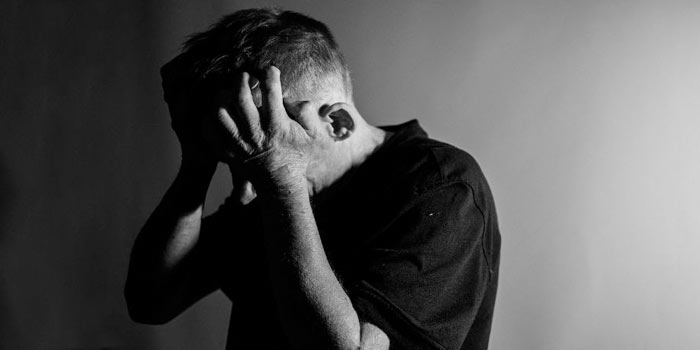
There are many people who feel depressed at some point in their lives. Feelings of discouragement, frustration, and even despair are normal in the face of disappointment and can last several days before disappearing gradually.
Now, for some people, these feelings can last for months and years, causing serious problems in their day to day.
Depression is a serious and debilitating psychopathology and affects how an individual feels, thinks, and acts. It can cause both physical and psychological symptoms. For example problems of intake, sleep problems, discomfort, fatigue, etc.
Depression: Depression is the most common mental health disorder that affects more than 264 million people in the world, affecting more women than men.[1]
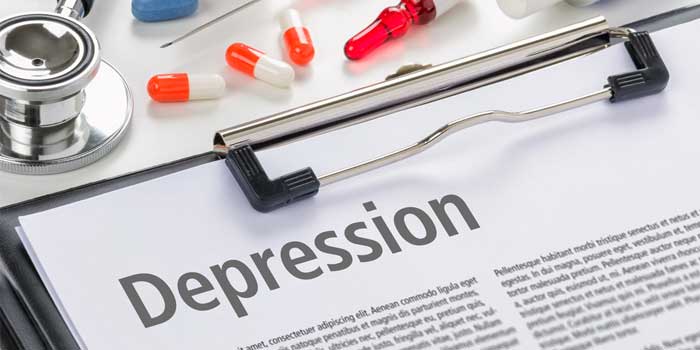
Depression represents 4.3% of the global burden of morbidity and is among the leading causes of disability, especially among women.
Although the depressive disorder can be a devastating illness, it often responds to treatment. The key is to get a specific evaluation and treatment plan. Safety planning is important for individuals who have suicidal thoughts.[2]
Bipolar disorder can rarely be treated without medication, as it is necessary to stabilize the patient’s mood.
An anxiety disorder is diagnosed when several anxious symptoms cause anguish or some degree of functional deterioration in the life of the individual who suffers it. A person with an anxiety disorder may find it hard to function in different areas of their life: social and family relationships, work, school, etc.
The largest number of people had an anxiety disorder, estimated at around 4 percent of the population.[3]
There are different types of anxiety disorders:
Feeling a little anxiety on some occasions is quite normal. On the other hand, a person may have a generalized anxiety disorder if he or she experiences any of the following situations:
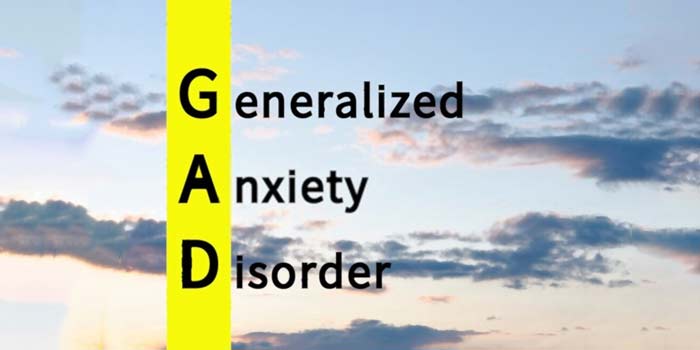
GAD affects 6.8 million adults, or 3.1% of the U.S. population, in any given year. Women are twice as likely to be affected. The disorder comes on gradually and can begin across the life cycle, though the risk is highest between childhood and middle age. Although the exact cause of GAD is unknown, there is evidence that biological factors, family background, and life experiences, particularly stressful ones, play a role.[4]
People with generalized anxiety disorder experience a high level of anxiety and worry continuously over a period of at least 6 months. Anxiety is often accompanied by one or more of the following symptoms:
Tired, sleeping troubles, headache, nausea, excessive sweating, tremors, difficulty concentrating difficulty breathing muscle aches, heart palpitations (heartbeats abnormally fast), irritability (tendency to get angry easily), etc.
Generalized anxiety disorder is a treatable condition. There are recognized treatments for this disorder. Treatments allow people to regain control over their lives and daily activities. The earlier the patient is seen, the better the chances of recovery.
A phobia is a type of anxiety disorder, defined by a persistent and excessive fear of an object or situation.[5]

In people who have a phobia, these fears become excessive, persistent, and invasive. The affected person may panic and try to avoid situations or conditions that remind him of the object of his fear.
Phobias are part of the big family of anxiety disorders.
The 2 most common forms of phobias are The Specific Phobia and Social Phobia.
Specific Phobia: Specific phobia is a fear associated with a particular object or situation, such as traveling by plane. The person feels excessive and unreasonable fear of a situation that does not represent a real danger.

The objects or situations that are most often the cause of specific phobias are animals, insects, thunderstorms, heights, bridges, lifts, wounds (including blood and bites), death, and restricted spaces (claustrophobia).
Social Phobia: Social phobia is a fear associated with certain social activities where the person may feel embarrassed, humiliated, or preoccupied with the judgment of others.

The fear of speaking in public or in a meeting and the fear of eating in public are examples of social phobias.
There are recognized treatments for Phobia. Treatments allow people to regain control over their lives and daily activities. The earlier the patient is seen, the better the chances of recovery.
Obsessive-Compulsive Disorder (OCD) is an anxiety disorder. Obsessions are thoughts or images which arise frequently and are tough to drive out of the mind.

These obsessions are disturbing, sometimes frightening or unpleasant. They can generate a lot of distress, fear, discomfort, or disgust.
To try to get rid of obsessions, the individual feels compelled to do repetitive gestures, rituals, called compulsions. Compulsions are an attempt to control obsessions through the practice of verifications or rituals.
Some people are struggling with so many compulsions that they cannot leave their homes for any work or leisure activity. From time to time they hide their symptoms and this causes them to isolate themselves.
Obsessions or Compulsions often observed:
The person who suffers from OCD is mindful of the absurdity of his thoughts and or behavior, but without help, he cannot stop. These ideas and behaviors are out of control.
There are recognized treatments for treating Anxiety disorders. However, if you have symptoms associated with anxiety disorders, you can take action today. Tips for maintaining yourself will help you change some lifestyle habits.
Psychotic disorders are serious psychopathologies in which people lose touch with reality. Two of the main symptoms of Psychotic disorders are delusions and hallucinations.
Delusions are false beliefs, such as the idea that someone is following. Hallucinations are false perceptions, such as listening, seeing, or feeling something that does not exist.
The most common psychotic disorders are discussed below:
Schizophrenia causes the person suffering from it to have hallucinations and strange thoughts that affect their behavior. Schizophrenia can arise at any age, the average age of beginning tends to be in the late teens to the early 20s for men, and the late 20s to early 30s for women. [6]

Currently, there is no cure, although it is true that you can control and achieve a normal life through therapeutic interventions and antipsychotic medication.
But, schizophrenia does not appear in only one way. That is why different types can be differentiated according to the symptomatology they present:
Schizophrenia is one of the most serious diseases and that many people suffer. To treat it, it is necessary to use drugs and psychotherapy that will allow the person who suffers to enjoy life. This is the only way to avoid new outbreaks.
Paranoia is also known as “delusional disorder” and is characterized by the person having in his mind one or several ideas that he believes are true. An example would be to think that everyone is watching and that they have a macabre plan that affects their personality.
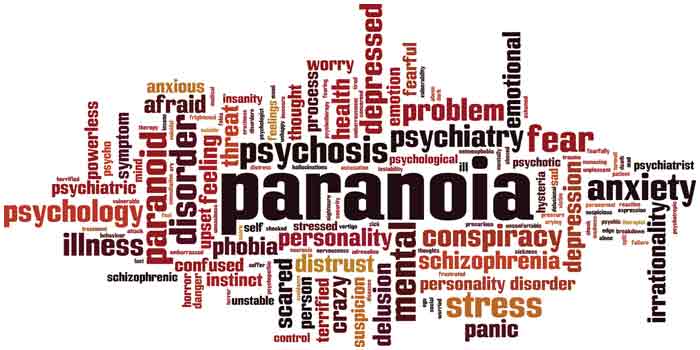
In this case, there are also some types of delirious disorders that have a lot to do with the nature of delirium. Here some of them:
People who suffer from this delusional disorder are not aware of it since everything they think they see for themselves is true. This is why it is so difficult to solve the problem and control it, in some way.
The psychotic disorder due to medical illness occurs when the symptoms of the said disorder are the result of diseases that affect the function of the brain (for example, a brain tumor).
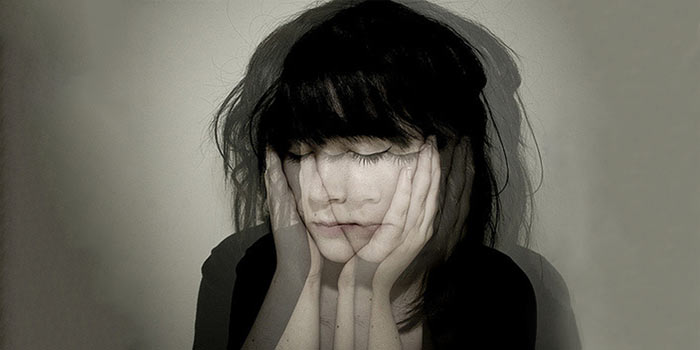
The treatment for psychotic disorder depends on the cause of the psychosis. It may include drugs for symptom control and psychotherapy. A hospitalization is an option for serious cases in which a person can be dangerous to themselves or to others.
Personality disorder is a mental health disorder that is often called a black-and-black disease. The cause behind personality disorder is depending on the person, and it also changes depending on the family environment and lifestyle.

Personality disorders are divided into three groups based on the similarity of symptoms.
Group A includes suspicion, schizoids, and schizotypal personality disorder, and the hallmark of people with these disorders is that they look strange and quirky.
Group B includes antisocial, borderline, acting, and self-loving personality disorders, and the characteristics of those with these disorders are acting and emotional.
Group C includes avoidance, addiction, and obsessive-compulsive disorder, and the hallmark of people with these disorders is that they appear to feel anxiety or fear.
There are also some other types of Personality disorders:
It is characterized by disbelief and suspicion, such as interpreting others’ motives as malicious. Without sufficient grounds, others decide to use or fool yourself and take caution.
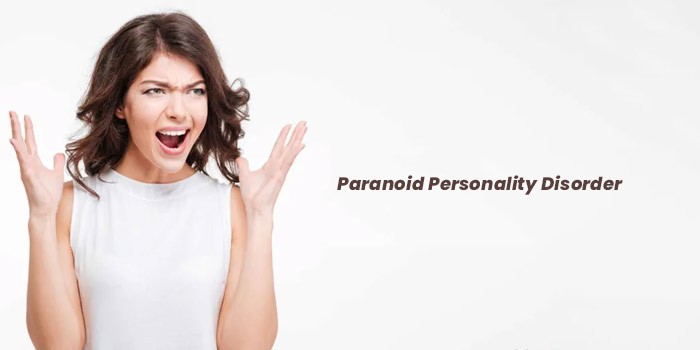
It is difficult for them to establish trusting relationships or cooperative relationships with others because they are obsessed with questioning the integrity and trust of others.
It is characterized by withdrawal from social relationships and restriction of emotional expression in interpersonal situations. People with this disorder do not want to be intimate and prefer to stay alone rather than be with other people.
It can sometimes be very difficult to distinguish people with this personality disorder from the mild forms of autism spectrum disease.
Intimate relationships are characterized by sudden tension and inability to settle down, lack of ability to build such relationships, plus cognitive or perceptual distortion and quirky behavior.
It is characterized by ignoring and infringing on the rights of others. This feature is sometimes called psychopathic or social illness. Patients break the legal norms and repeat irresponsible actions.
It is characterized by instability and striking impulsiveness such as interpersonal relationships, self-image, and emotion. They are sensitive to being abandoned and try to avoid doing so as they are.
The interpersonal relationship is extreme and unstable as if the same person is pushed down if it thinks that the other person is overly idealized.
It is characterized by exaggeration in fantasies and behavior, a desire to be admired, and a lack of empathy. He overestimates his abilities and achievements and has a feeling of exhilaration, and is bound by endless fantasies of success, power, and beauty.
It is characterized by social suppression, a sense of failure, and hypersensitivity to negative assessment. We are always afraid to be criticized, criticized, or rejected by others, and tend to avoid even important interpersonal situations.
It is characterized by an excessive desire to take care of it. As a result, they are dependent and clinging to others who turn to their dependent desires, and they fear the separation from them.
It is characterized by a loss of flexibility, openness, efficiency, and so much in control of order, perfectionism, spirit, and interpersonal relationships. Depending on the details, order, and form, they cannot achieve the important things, such as not meet deadlines.
Currently, there is no drug that is insured for personality disorder itself. As a symptomatic treatment, mood stabilizers and antipsychotics may be used. In the treatment of personality disorder, it is important to set a clear treatment goal with the patient and work together to achieve the goal.
Eating disorders are serious disturbances in eating behavior. Like any mental health disorder, eating disorders are difficult to index and categorize.

There are three main types of eating disorders: Anorexia Nervosa, Bulimia Nervosa, and Binge Eating Disorder.
Anorexia nervosa is characterized by an obsession with controlling the amount of food consumed. One of its most characteristic symptoms is the distortion of body image.
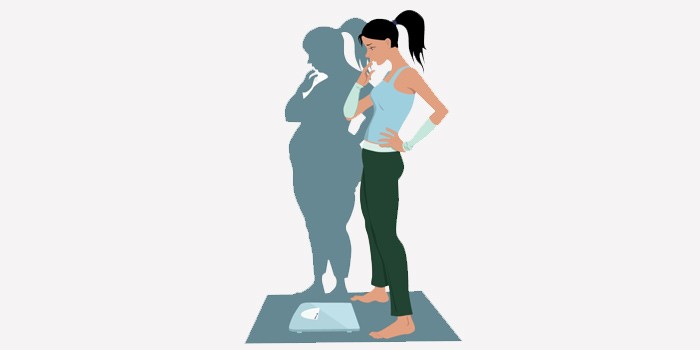
People suffering from anorexia restrict the intake of food by dieting, fasting, and even excessive physical exercise.
They almost do not eat, and the little they eat provokes an intense feeling of discomfort. Nearly 90% of women with anorexia experience osteopenia (loss of bone calcium) and 40% have osteoporosis (more advanced loss of bone density).[7]
Bulimia nervosa is a disorder of eating behavior that is characterized by abnormal eating patterns, with episodes of massive food intake followed by maneuvers that seek to eliminate those calories (induce vomiting, consuming laxatives, etc.).

After these episodes, the usual thing is that the subject feels sad, in a bad mood, and has feelings of self-pity.
Binge eating disorder is a serious disorder in which the sufferer often consumes large amounts of food and feels that he has lost control during binge eating. After overeating, severe anxiety or worry about weight usually appears.

Although there is no medication specifically for eating disorders, some medication can help to resolve the mood problems often associated with an eating disorder. Since eating disorders can lead to physical health issues, you may need assessment care and Physical Examination.
People who have difficulty controlling their impulses are unable to stop doing something they want to do, even if they know that they should not do it or be harmful to themselves or others.
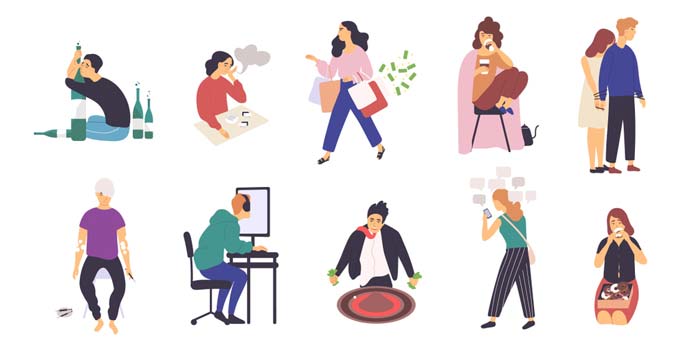
In addictions (alcohol, drugs, tobacco, gambling, etc.) the addict feels impelled to drink, smoke, play, eat, etc. without being able to find a way to stop doing it.
These people believe that they have to have everything they want when they want it and that it is unbearable if they do not get it. Sometimes, this way of thinking appears only in one or two situations or behaviors, but these people are able to tolerate frustration in other areas of their lives.
The first step to prevent this, therefore, is to identify these automatic and preconscious thoughts, become fully aware of them and change them for more rational and adaptive ones that guide the behavior of these people in a more appropriate way.
As we know, the most common mental health disorders, now we can recognize the signs and symptoms of a personality disorder and help ourselves or someone we know to live a healthier more fulfilling life.
It is not easy to establish a cause-effect in the onset of mental illness. If you are affected by some mental health disorder, the treatment depends on the mental disorder you have and how bad it is. Together with your doctor, they will work on a treatment plan just for you. Usually, it involves some type of therapy. You can also take medications. Some people also need social support and education to manage their condition.
In some cases, you may need more intensive treatment. If your mental illness is serious or you are at risk of harming yourself or someone else, you may need to go to a psychiatric hospital. At the hospital, you will receive counseling, group discussions, and activities with mental health professionals and other patients.
References:
© 2025 The World Book. All Rights reserved.
Founder: Nayma Nishat